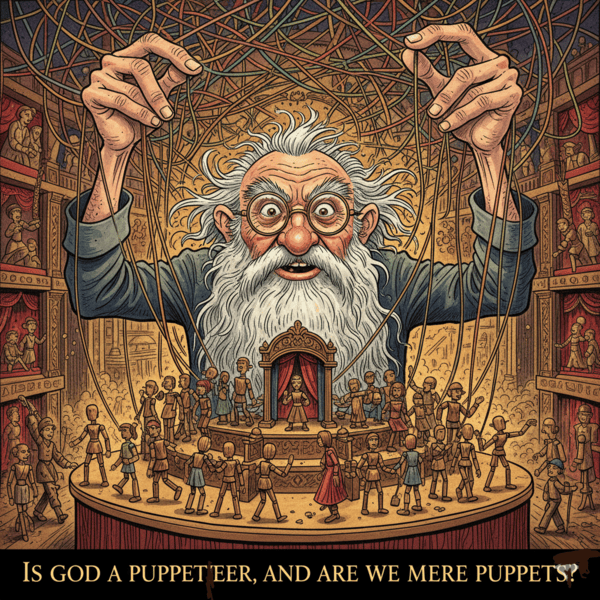Who Is Isaiah 53’s Suffering Servant: The Messiah or Israel?
Isaiah 53 is one of the most remarkable passages in the Hebrew Scriptures. Its vivid portrayal of a suffering figure who bears the sins of others has sparked much theological discussion. While some contemporary Jewish interpreters suggest the passage describes the nation of Israel’s collective suffering, a careful examination of the text reveals a clear prophetic vision of the Messiah. Let’s explore why the chapter cannot be about Israel but instead points unmistakably to an individual—the Messiah, ultimately fulfilled in Jesus Christ.
THE SERVANT SONGS CONTEXT
Isaiah 53 belongs to a series of “Servant Songs” found in Isaiah 40-55. Throughout these chapters, we see a development in the servant motif:
- In some passages, Israel is explicitly identified as God’s servant (Isaiah 41:8-9, 44:1-2, 45:4)
- In others, the servant seems to be an individual distinct from Israel who has a mission to Israel (Isaiah 49:5-6)
- By Isaiah 52:13-53:12, the servant is clearly differentiated from the people
This progression suggests that while Israel is God’s servant in a general sense, the specific suffering servant of Isaiah 53 is an individual with a unique redemptive role.
TEXTUAL EVIDENCE AGAINST THE ISRAEL INTERPRETATION
Several aspects of Isaiah 53 make it impossible to apply this passage to the nation of Israel:
The Servant Bears Others’ Sins: “But he was pierced for our transgressions, he was crushed for our iniquities; the punishment that brought us peace was on him, and by his wounds we are healed.” (Isaiah 53:5)
Throughout Scripture, Israel herself needed atonement for her sins. The nation was never portrayed as bearing the sins of others or serving as an atoning sacrifice for the Gentiles. In Reformed theology, the substitutionary atonement described here aligns perfectly with Christ’s work on the cross.
The Servant Is Innocent and Righteous: “He had done no violence, nor was any deceit in his mouth.” (Isaiah 53:9b)
Isaiah consistently portrays Israel as sinful and rebellious (Isaiah 1:4, 59:2-3). This description of perfect innocence cannot apply to the nation but perfectly describes the sinless Messiah.
The Servant Suffers Willingly and Silently: “He was oppressed and afflicted, yet he did not open his mouth; he was led like a lamb to the slaughter, and as a sheep before its shearers is silent, so he did not open his mouth.” (Isaiah 53:7)
Throughout Israel’s history, the nation typically lamented its suffering, often questioning God’s justice. This silent, willing suffering is characteristic of Christ before His accusers (Matthew 26:62-63, 27:12-14).
The Servant Dies and Is Resurrected: “He was cut off from the land of the living… Though the LORD makes his life an offering for sin, he will see his offspring and prolong his days, and the will of the LORD will prosper in his hand.” (Isaiah 53:8b, 10b)
While nations may experience metaphorical “death” and “resurrection,” this passage describes a literal death followed by renewed life—something that can only apply to an individual, not a nation.
THE CRITICAL “WE” VS. “HE” DISTINCTION
Another compelling argument against the Israel interpretation is the clear distinction between the speakers (“we”) and the servant (“he”) throughout the passage: “We all, like sheep, have gone astray, each of us has turned to our own way; and the LORD has laid on him the iniquity of us all.” (Isaiah 53:6)
If Israel is confessing “we have gone astray” and “the LORD has laid on him our iniquity,” then Israel cannot simultaneously be the “him” who bears those iniquities. The text establishes a clear distinction between the confessing community and the suffering servant.
HISTORICAL JEWISH INTERPRETATIONS
While modern Jewish interpretation tends to favour the Israel interpretation, this wasn’t always the case. Many ancient Jewish sources interpreted Isaiah 53 messianically:
- The Targum Jonathan (1st century AD) explicitly connects parts of Isaiah 53 with the Messiah
- The Talmud (Sanhedrin 98b) applies Isaiah 53:4 to the Messiah
- The Zohar identifies the suffering servant as “Messiah ben Joseph”
- Moses Alshech (a 16th century rabbi) wrote: “Our rabbis with one voice accept and affirm the opinion that the prophet is speaking of the Messiah, and we shall ourselves also adhere to the same view.”
The shift toward a national interpretation gained prominence primarily in response to Christian claims about Jesus.
THE PERFECT FULFILLMENT IN JESUS CHRIST
From a Reformed perspective, Jesus Christ fulfils every detail of Isaiah 53 with remarkable precision:
- He was “despised and rejected” (53:3) – Jesus was rejected by His own people
- He “took up our pain and bore our suffering” (53:4) – Jesus healed the sick and delivered the oppressed
- He was “pierced for our transgressions” (53:5) – Jesus was crucified for our sins
- He made “his grave with the wicked” (53:9) – Jesus died between two criminals
- He was assigned “a portion with the great” (53:12) – Jesus rose and was exalted to God’s right hand
The Reformed doctrine of particular redemption (limited atonement) aligns perfectly with Isaiah 53:11-12, which speaks of the servant “bearing the sin of many” and making “intercession for the transgressors.”
CONCLUSION: ISAIAH 53’S SUFFERING SERVANT
The evidence is overwhelming: Isaiah 53’s suffering servant is the Messiah rather than the nation of Israel. The Servant’s innocence, His substitutionary suffering, His death and resurrection, and the clear distinction between the confessing community and the Servant Himself all point to an individual figure. From a Reformed perspective, then, the passage is one of Scripture’s most profound prophecies of Christ’s atoning work, written over 700 years before His birth.
As we consider Isaiah’s remarkable prophecy, we’re reminded of God’s sovereign plan of redemption, decreed before the foundation of the world and perfectly executed in the fullness of time through Jesus Christ. The suffering servant isn’t merely a historical curiosity but the very cornerstone of our salvation—the Lamb slain from the foundation of the world.
ISAIAH 53’S SUFFERING SERVANT: RELATED FAQs
The servant is explicitly called Israel elsewhere in Isaiah. Doesn’t this prove Isaiah 53 is about Israel? While Isaiah does identify Israel as God’s servant in some passages (Isaiah 41:8-9, 44:1-2), he also clearly distinguishes between Israel and another servant figure. In Isaiah 49:5-6, the servant has a mission “to bring Jacob back to him… to restore the tribes of Jacob.” As Reformed scholar Alec Motyer explains, “The Servant of the Lord is both Israel and an individual, a reflection of how the Messiah embodies and represents the people while remaining distinct from them.”
- Couldn’t Isaiah 53 be referring to a righteous remnant within Israel rather than the nation as a whole? The remnant interpretation still fails to account for the vicarious, substitutionary nature of the servant’s suffering. The text presents the servant as bearing the sins of others, which a remnant within Israel would not do for the rest of the nation. GK Beale, notable Reformed theologian, argues “the remnant view creates more problems than it solves, as it requires dividing Israel into two groups without textual warrant, and still doesn’t explain how one group could atone for another’s sins.”
- Israel’s suffering brought light to the nations. Isn’t this consistent with Isaiah 53? While Israel’s experiences have impacted the world, Isaiah 53 describes vicarious suffering that brings actual healing and forgiveness—something Israel’s suffering never accomplished. Richard Belcher Jr notes: “The servant’s suffering is redemptive and substitutionary in nature; Israel’s suffering throughout history, though significant, has never been portrayed as bringing atonement to the nations.”
How do you explain the collective language used at points in the servant songs? The servant songs use both collective and individual language because the Messiah represents and embodies Israel’s mission in a perfect way. As Michael Horton writes, “In Reformed covenant theology, we understand Christ as the true and faithful Israel who succeeds where national Israel failed, fulfilling their vocation as the light to the nations.”
- When did Jewish interpretations of Isaiah 53 shift from messianic to national? While diverse interpretations existed throughout history, the national interpretation gained prominence particularly during the medieval period in response to Christian-Jewish polemics. O Palmer Robertson observes, “The messianic interpretation dominated until figures like Rashi (11th century) popularised the national view, not primarily from exegetical considerations but from apologetic concerns in Jewish-Christian debates.”
- How does Isaiah 53’s suffering servant relate to Reformed views of election? Isaiah 53:11-12 speaks of the servant “bearing the sin of many” rather than all, aligning with the Reformed understanding of particular redemption. RC Sproul explained this connection: “The definite nature of the atonement is prefigured in Isaiah’s language of the ‘many’ for whom the servant dies, pointing to Christ’s effective work for the elect rather than a potential atonement for all without exception.”
How does the structure of Isaiah support the messianic interpretation of chapter 53? Isaiah’s structure moves from condemnation (chapters 1-39) to comfort (chapters 40-66), with the suffering servant as the pivotal figure bringing this comfort through redemption. Kevin DeYoung points out, “the servant songs build progressively toward Isaiah 53, forming a coherent portrait of a figure who must be both representative of Israel and yet distinct from Israel—perfectly fulfilled only in Jesus Christ.”
ISAIAH 53’S SUFFERING SERVANT: OUR RELATED POSTS
Editor's Pick

The Throne-Room Vision: Who Did Isaiah See?
The scene is unforgettable: Isaiah stands in the temple, and suddenly the veil between heaven and earth tears open. He [...]

The Angel of the Lord: Can We Be Certain It Was Christ All Along?
Throughout the Old Testament, a mysterious figure appears: the Angel of the LORD. He speaks as God, bears God’s name, [...]

The Doctrine of Providence: Does God Really Govern All Things?
You’re sitting in the doctor’s office when the diagnosis lands like a thunderclap. Your mind races: Why this? Why now? [...]
SUPPORT US:
Feel the Holy Spirit's gentle nudge to partner with us?
Donate Online:
Account Name: TRUTHS TO DIE FOR FOUNDATION
Account Number: 10243565459
Bank IFSC: IDFB0043391
Bank Name: IDFC FIRST BANK






